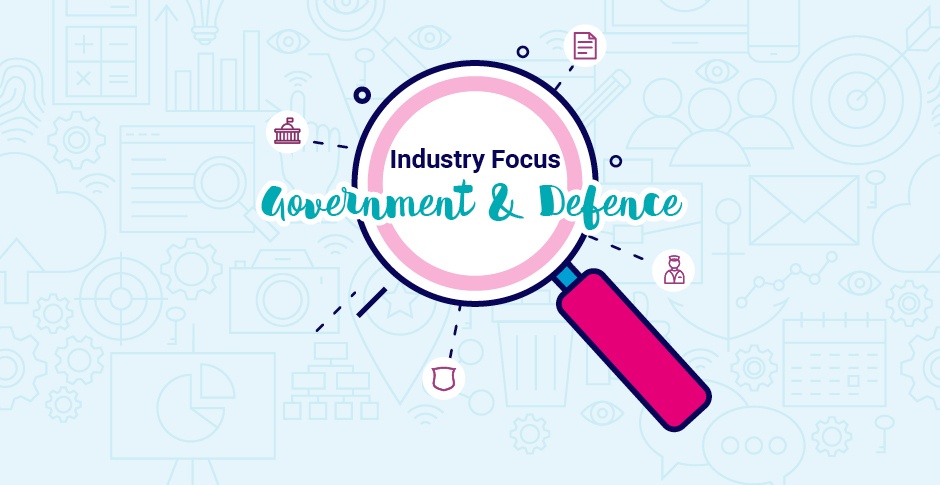The lowdown on Government & Defence roles in Australia
Want to work in a dynamic, diverse environment where you can really make a difference? Maybe it’s time to go public. Australia’s public service combines a breadth of industry classifications in one multifaceted sector – from health and education to transport, defence and town planning – and the latest data from SEEK Employment Trends shows opportunities are on the rise.
Job ads on SEEK for Government and Defence rose by 33% year-on-year in January and the average advertised salary was $92,145. Within the broader sector, the Navy recorded the highest growth in opportunities rising 120% for the three-month period of November to January.
“Government is generally very good when it comes to diversity and inclusion and has some great flexibility policies, however it’s not always good at selling its value proposition,” she says.
Police and Corrections also saw a 62% boost in opportunities over the same period. Policy, Planning and Regulation grew by 40%. Meanwhile, the large advertising sectors of Local, State and Federal Government saw increases of 31%, 14% and 16% respectively.
Public benefits
Kathy Kostyrko Director, Public Sector, at recruitment firm Hays, says Government has a lot to offer candidates with a desire to achieve work-life balance. “Government is generally very good when it comes to diversity and inclusion and has some great flexibility policies, however it’s not always good at selling its value proposition,” she says.
“There can be a perception from the outside that Government is just one huge department, but there are so many different areas of specialty and lots of interesting roles,” adds Kostyrko.
The City of Melbourne is a great example. The Council employs more than 1,600 people and is responsible for the municipality of Melbourne. This includes everything from capital works and maintenance to community health services and arts and cultural programs.
Anna Wodrow, Talent Acquisition Lead, People and Culture, City of Melbourne, explains that the Council has a clear recruitment strategy. “Our recruitment team partners with each hiring manager to tailor individual recruitment strategies to the unique requirements of each position,” she says. “We also like to ensure all applicants have a strong understanding of the position they are applying for and can see themselves ‘making the difference’ for Melbourne.”
Diversity matters
Melbourne is home to one of the world’s most culturally diverse communities and City of Melbourne aims to reflect this within its own workforce. “Our recruitment policy ensures gender balance and cultural sensitivity on interview panels as well as balanced shortlists,” says Wodrow. “Our Aboriginal Employment and Diversity and Inclusion strategies are key to realising our inclusion and diversity goals.”
City of Melbourne is also a strong supporter of the Jawun Secondment Program, which provides placements for skilled secondees to Indigenous organisations, and Wodrow says the Council walks the talk when it comes to flexibility. “Our work flexibility policy ensures ‘all roles flex’ and our generous gender neutral parental leave conditions benefit all employees,” she says. “We also share real employee stories that show true and authentic experiences from City of Melbourne trainees, women in leadership roles and employees achieving balance through flexibility in their jobs.”
Making your application count
While City of Melbourne looks for candidates who closely match the requirements of each role, it also values those from different backgrounds who may bring a diversity of ideas to the workplace. “We also look for candidates who have really researched the position and who have responded with true authenticity - they will always have a head start,” she says. “Candidates whose previous experience demonstrates our values in action - integrity, courage, accountability, respect and excellence – will also stand out.”
Kostyrko says public sector applicants are usually required to respond to written selection criteria. “There are many examples online to help you prepare,” she says. “Keep your responses short and to the point.”
Kostyrko also recommends candidates use the ‘STAR’ technique during interviews. “It stands for ‘Situation, Task, Action, Result’,” she explains. “It helps you to clearly demonstrate your skills and explain your achievements. Employers like to hear about the results you have achieved, not just the tasks in your previous job descriptions. It’s also important that you understand the requirements of a role before you apply, so don’t be afraid of calling the HR department is advance and asking them questions about the role.”
Australia’s public sector is a broad network of departments, services and agencies where you can really make your mark. With even more opportunities on SEEK in this dynamic sector, now may be the time to explore your options.
